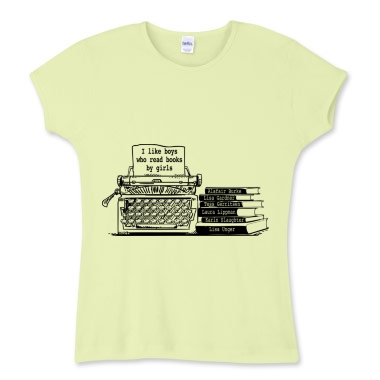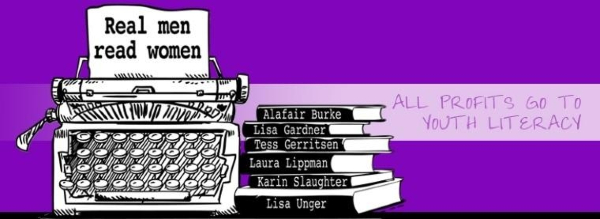by Stephen Jay Schwartz
It was Wednesday of this week, in Santa Monica, at a new cafe across the street from my usual cafe.
I went outside for a little break and to make a phone call. I called my wife, talked story points for the new novel.
It had been an exceptional day. Filled with serendipitous moments. A great meeting at Sony Studios with the director of the film project I’m writing. A great meeting also with the guy who will be revamping my alto saxophone, enabling me to play music again, after a fifteen year hiatus. And then a new cafe, filled with the promise of new cafes, where I know no one and can focus on focused writing. It was a good day.
I turned off the phone and seconds later saw the decorative Christmas lights, which hang year-round between street signs, suddenly swing and shake wildly. I thought we were having an earthquake.
Which brought a strange memory, of telephone wires swinging wildly a few years ago. I thought that was an earthquake as well.
I asked a guy beside me what it was and he said there had been a naked woman dancing on the rooftop of the building next to us. It dawned on me that something might have hit those Christmas lights to make them shake so wildly.
I looked up the street a ways and saw a small crowd gathering. I walked up and saw the woman’s body on the ground. People hovered over her, passersby compelled to stop. They touched her shoulder tentatively. Someone found a sheet and draped it over her.
She was breathing. An occasional, deep breath. But no movement. Her head was completely shaved. People were saying she was a transient, that she was doing drugs, that she was crazy.
The police cars came. A woman said she was a nurse and a cop gave her a pair of blue, rubber gloves. She checked the woman’s pulse. A fire truck appeared and eight paramedics leapt into action. They did a quick visual examination. I heard one of them say, “agonal breathing.”
Crime scene tape went up around us quickly. The street filled with police cars. Cops rushed into the building where she had jumped—there was word that someone had been up there with her, maybe another jumper. I heard a cop say they were treating it like a crime scene. A forensics van pulled up.
The woman was put on a gurney and rushed away. Cops began taking statements. Blood remained on the asphalt where she had landed. It was a five-story fall.
I walked back to the cafe.
People were talking. It hit everyone differently. It hit everyone the same.
We were soothed by the fact that she was alive when they took her away. That she was breathing. I had seen her back rise and fall from the breaths.
Everyone who came into the cafe asked the barrista what happened. I sat at the counter, piping in when he fumbled for words. I said she was breathing.
A man came in and asked the question. We told him and he nodded. He’d seen a lot of these. He was a fireman. He said it might have been agonal breathing. I said, yes, that’s what the paramedics said. The fireman frowned. She won’t make it, he said. Agonal breathing is what the body does when there’s nothing left to do. It’s the body’s survival mechanism after intense trauma. It meant she was circling the drain. This is what the fireman said.
I worry that I’ve disassociated. It frightens me that I can talk about the details. I observed so closely the work of the police and paramedics. I took it in as if it was research to be used in my never-ending quest to get things right, to make things real in my writing. I wonder if I’m callous or if I’m simply in shock.
I remember that other day, a few short years ago. When I saw the telephone wires swaying. If I had left work thirty seconds earlier it might’ve happened to me. The wires were swaying because a telephone pole had been severed. This happened when the tow truck, traveling sixty miles an hour, tore into it. This was after the truck plowed through a dozen people waiting at the bus stop.
I drove into this scene, thirty seconds after it happened. A Hieronymus Bosch landscape. There were bodies in the street. And people rushing by. Children from the school next door staring through a chain-link fence, tiny hands gripping metal. A man running in his underwear, his arms waving.
It happened next to a police station, so the cops arrived quickly. I was told to stay in my car, drive on, clear the scene. I drove on, into the normalcy of the city streets beyond. I heard sirens, watched emergency vehicles pass, going the other direction.
And I thought to myself…did that happen?
I was in shock, although I didn’t know it. I would find out six months later in my doctor’s office when he told me I’d been suffering from Post Traumatic Stress Disorder. This, after a five-month crusade to convince everyone I knew that the Bird Flu was the new Armageddon. That the Bird Flu would destroy us all. I had reams of research to back me up. I bought the face masks and emergency supplies and I was considering getting a shotgun to protect my family for when the System collapsed.
I was delivering my litany to a good friend when he asked the question, “Has anything strange happened to you recently? Have you experienced anything traumatic?”
Nothing, I said. I’ve been a bit stressed. This Bird Flu has really got me down. I haven’t been eating that well. There was this crazy accident I drove through a few months back where I saw three dead bodies and one of them could’ve been me if I’d been there a few seconds earlier and…
That’s it, he said.
The doctor gave me some anxiety pills and I took one and hated it and didn’t take anymore and gradually, during the course of the next few weeks, got better. That heavy feeling in the back of my head began to lighten. I think it was just the identification of the source of the trauma that set me straight.
As I sat at the counter of my new cafe, clinically replaying the images of the woman lying in the street, the cops arriving, the blue rubber gloves, the paramedics set into action, the police taping off the scene, I wondered if this was shock.
The barrista kept getting the question, with each arriving customer. Gradually his ability to explain what happened slipped. Soon he had trouble saying anything. I stepped in to fill the blanks. Something in me fed on their moment of reaction. I absorbed it, tried to process it, wondered why I didn’t react as they did. Was I desensitized?
The barrista was quick to explain that he had not intended to see the body, that he had only been walking to the grocery store for items for the cafe. That, when he saw the body on the ground, it had taken a moment for him to understand what it was. He was not the kind of person to go running to the scene, he insisted. It seemed very important that he communicate this.
I was one of the people who went running to the scene. I was there thirty seconds after she landed. I was there seven minutes before the police arrived. Thirteen minutes before the paramedics. I was aware that I could do nothing to help her. I observed, only. I was there, perhaps, to watch her die.
We write about these events, in our fiction. We visit the morgue and the coroner’s office and occasionally go to crime scenes. I’ve been to the morgue. I’ve seen autopsies. I’ve been in a room with three hundred bodies. They looked like empty gloves.
To be where a life was, just moments, seconds after that life has been extinguished…this is another story. This is sadness. I have been here a few times before. I’ve seen the bodies of two jumpers who leapt to their deaths from the clock tower of my college campus. I’ve stared at the body of a college student attached to his motorcycle on the ground in a pool of thick red blood as I hugged the shoulders of the friend who had driven the car that hit him. I passed the bodies of the men and women who were standing at that bus stop…
These are the tragic moments, the ones we remember. We linger on them. The inherent message is that life is fleeting, that at any moment the rug can be pulled out from under. In that instant, the bucket list comes out. What can I do with the time I have left? How long do I have? Have I said everything I need to say to my mother/father/wife/children? Have I left them enough to get by? (Money, guidance, wisdom, tools?)
I think this is why I run to the scene. It’s not to witness gratuitous violence. It’s not because I yearn excitement or that I find things morbidly entertaining. I run to the scene because I want to live. I want everyone to live. I want to understand life, and to understand life one must accept what is not-life and attempt to understand that as well.
I spoke with a friend of mine, later that night. She had seen this woman at the cafe the day before. She remembers staring at her for no apparent reason. She remembers thinking, “What is it with that girl?” There was an energy, a something-something about her that got my friend’s attention. Did my friend somehow know that this woman would be leaping to her death the very next day?
I remember the documentary I watched about the Russian theater attack in Moscow back in 2002. This was when the Chechen terrorists stormed a theater, planting women wearing suicide bombs in the seats, holding eight-hundred and fifty theater-goers captive for two and a half days. The Russian police pumped a chemical agent into the theater ventilation system to put everyone to sleep, but the gas was deadly and a hundred twenty-nine people were killed in the process. In the documentary, theater patrons were interviewed and many said they saw something strange in the eyes of the people who ultimately died. It was a distant look, something that suggested their lives were already over. As if they knew their time had come.
Perhaps this was what my friend saw. The day before. The woman leapt.
Sometimes I wonder, when we write in our fiction that a man has been shot dead, do we know what we have written? Have we considered what we’ve done for the sake of story? What does it mean when a woman jumps from the roof?
I run to the scene, to learn what to write.
 Huh??
Huh??

















